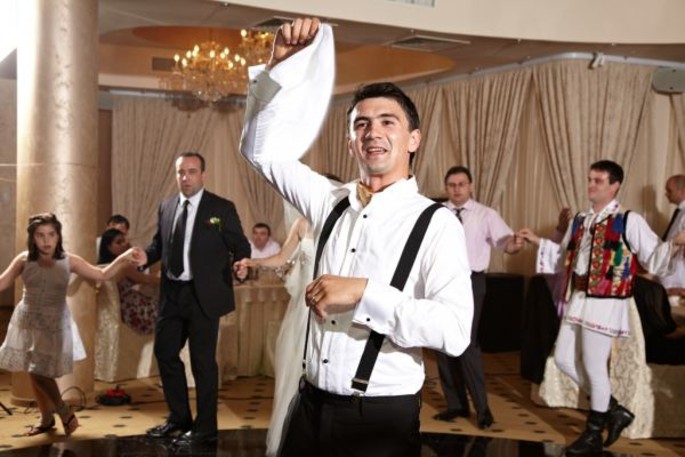At first, Perinita was a wedding dance in Prahova County. In the past, people would dance it on the wedding night and was connected to the bride’s dowry. People would dance around a cart with the items the bride would bring as dowry: carpets, curtains, and things woven by hand. In time, the cart-related custom disappeared, but the dowry idea remained.
In Romania, “perinita” is a diminutive of the word “perna” (pillow). The young married woman and her friends would dance in a circle around the pillow, a symbol of the dowry. Then young men would accompany them in dancing; the bride and groom would put the pillow on the ground and then kiss.
Due to that wedding custom, which was extremely popular, the pillow dance became part of the village’s “hora” (Romanian round dance). The young persons would no longer bring a pillow, but a handkerchief, kneel on it, and then kiss. Perinita is an all-time favorite dance at wedding celebrations and parties due to kisses and love between young people in love. During the Communist regime, it was one of Nicolae Ceausescu’s preferred dances and every party would end in it.
Perinita still is a dance encountered in Romanian wedding parties, being a moment of love. Although it lacks the symbols it once had, is a dance that survived the passing of time and one of the most beautiful parts of weddings. Although the name of “Perinița” endured, people use a handkerchief when dancing it.
Nowadays, the dance routine is the next: the boy beginning the dance holds the handkerchief and chooses a girl from the round dance. He dances with her, and then they kiss. The girl takes the handkerchief and chooses a boy. They dance and kiss; the boy is left with the handkerchief and chooses another girl. That fun time lasts until the song ends. Because a wedding party brings together all kinds of persons, guests have fun and kiss, enjoying a fiesta of love and music.
References and photographs:
















